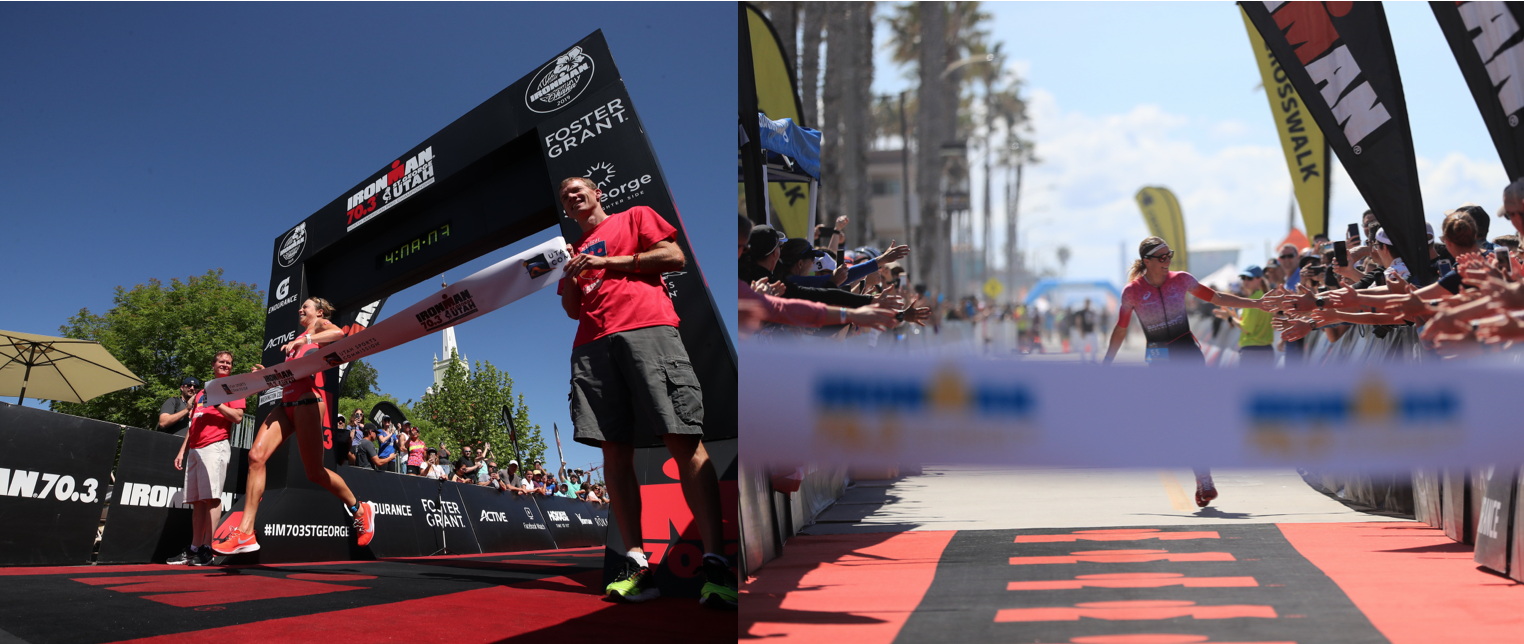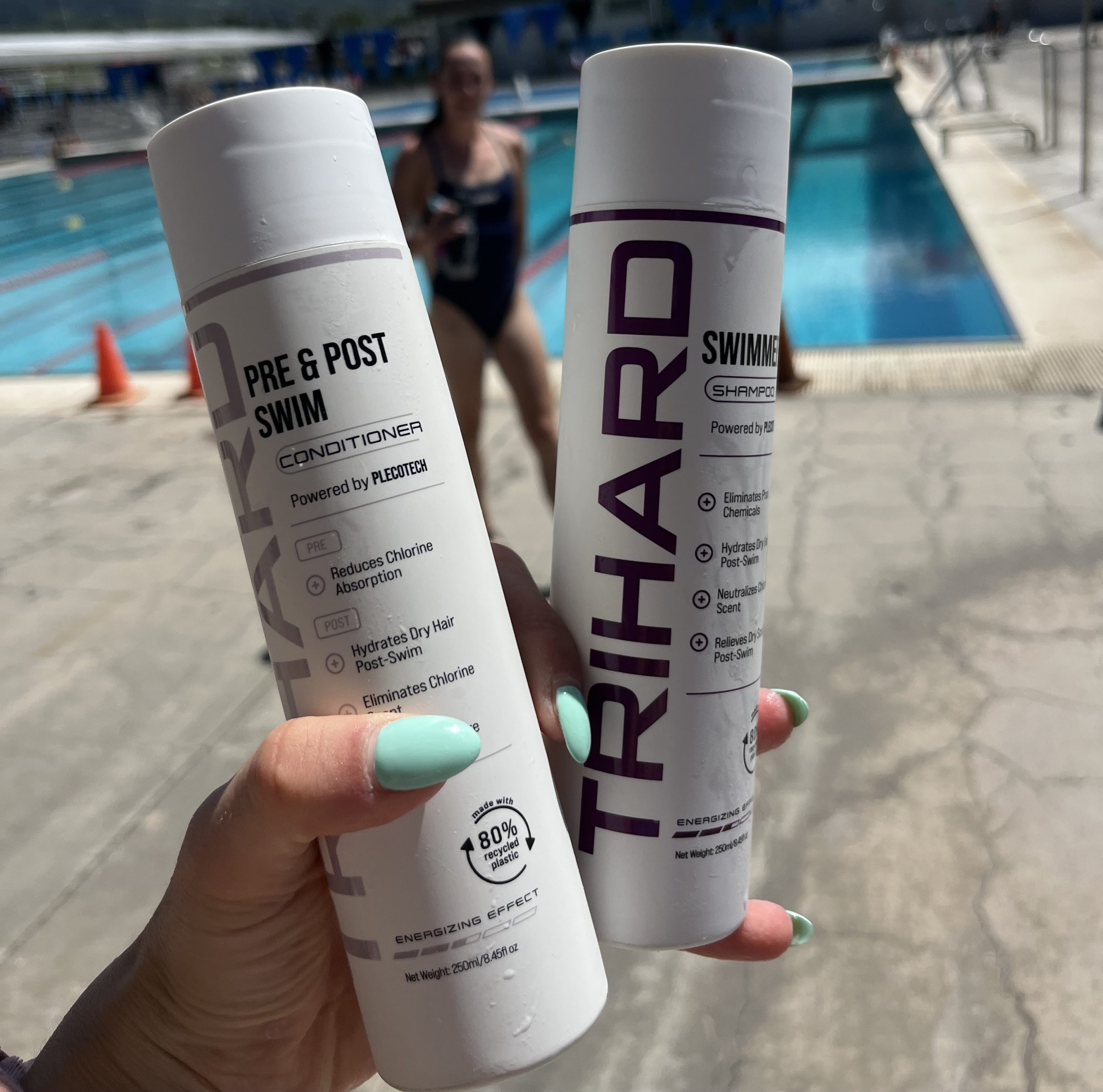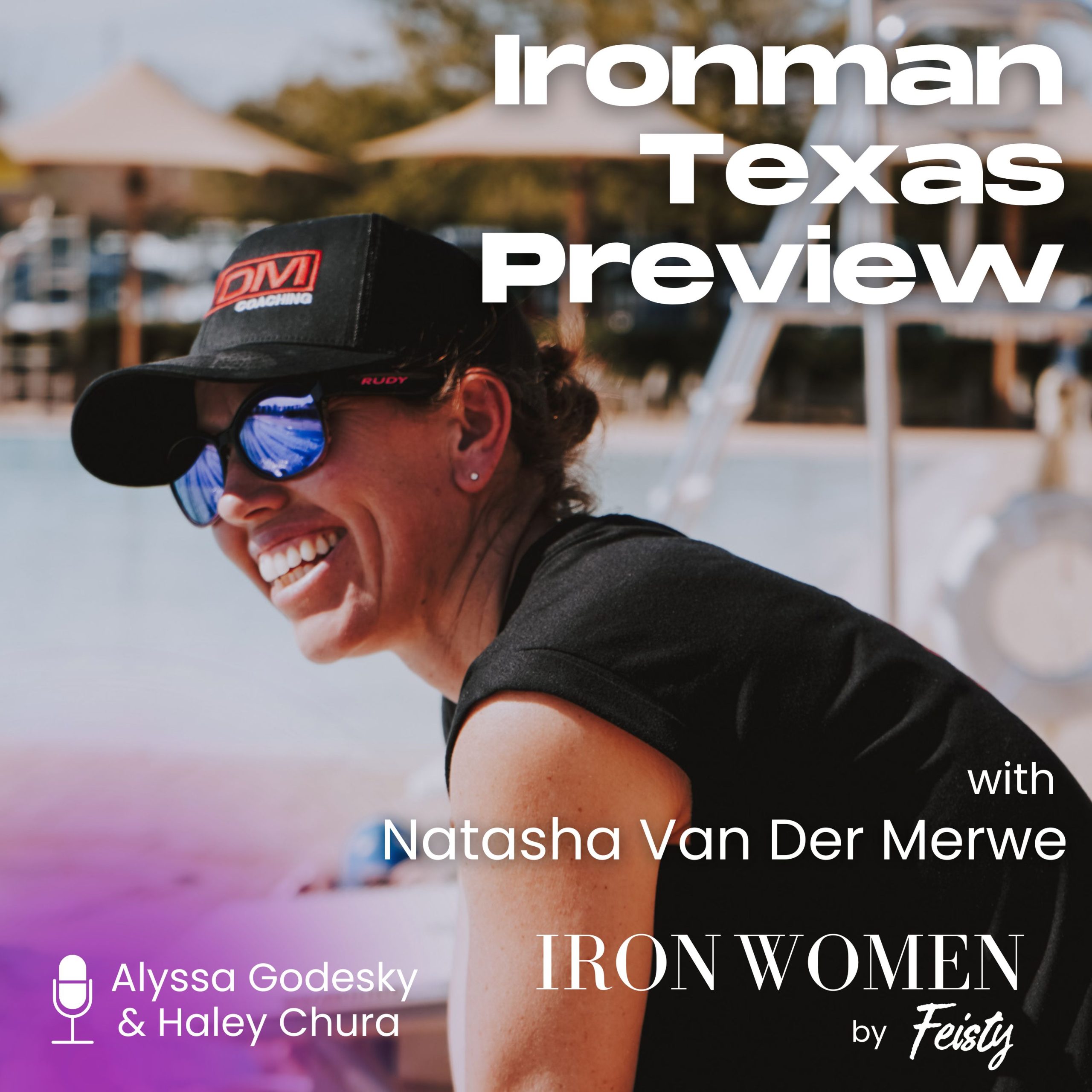May 8, 2019
Newsletter ep. 86: how to compare races?

If We Were Riding’ is a weekly triathlon-ish newsletter written by Kelly O’Mara and produced by Live Feisty Media. Subscribe to get it in your inbox every Wednesday morning. You can also read past issues. This episode is from May 8, 2019.
_______________
Apparently, I dated last week’s newsletter April 31, which isn’t even actually a day. How’s your week going?
Hello to all of you who said hi at St. George (and shout-out to Live Feisty right-hand-woman Jessica, who legit biked faster than me). I had a fine race. Not amazing, but fine, one I could bank and sometimes you just need one of those. It’s an insane course. And it was some super insane competition. More on that below.
And a reminder: There’ll be no new podcast this Friday. Use the time to catch up on all the past episodes.
________________
Which race was better?
(Photos: Gregory Shamus/Getty Images for Ironman (left); Sean Haffey/Getty Images for Ironman (right))
At St. George on Saturday, Holly Lawrence broke the course record by five minutes. By all appearances her performance was better than at Oceanside, where she said she had a rough day and was second to Daniela. But was it really? How do you know when one race is better or worse than another? How do you know how it stacks up? How do you compare it to other people also comparing their performance to other days?
(I am sure she would say St. George was definitively better. By the numbers. And she was flying all day. But how you feel isn’t always indicative of how you actually perform, right?)
The other thing about St. George this weekend was it was really fucking deep and competitive. Possibly the most competitive women’s field I’ve seen outside of a world championships. [The men’s field was also quite deep, but not as totally completely nuts.]
That meant I wasn’t the only person who finished and was like ‘wait, there were *how many* people ahead of me?’ It also meant the middle of the race calculus was even more complicated than usual: Most of the time I beat ‘x’ person and right now I’m behind them, but often I lose to ‘y’ girl and I’m staying steady with her. I always swim near so-and-so, but did they have a bad day today or am I on fire? How many minutes should I be ahead or behind? Is this good or bad? How do I know?
Here’s my idea: Given the big data we have in 2019, it should be possible to crunch the numbers and tell me how my swim stacked up compared to everyone else’s swims v. their previous averages. Thorsten, can you get on this? And tell us if Holly’s performance in St. G was better or worse than Daniela’s in Oceanside? kthnx.
More announcements
Well, I was at least mostly right: Ironman announced St. George will be the site of the 2021 70.3 World Championships. Which is sort of amazing, given how hard the course is. But it’s also sort of insane. That bike course isn’t exactly easy and triathletes aren’t generally exactly amazing bike handlers. I hit 45 mph at one point on course, and got a bit knocked around by the wind of oncoming traffic. Hopefully, no one dies.
The other half of Ironman’s announcement is that the full Ironman will come back to St. George next year as the North American IM champs (May 2020) and will rotate every three years. The gist is there will be three cities that will rotate a full and then have a 70.3 in the two off years. What will the other two cities be? Coeur d’Alene is probably a good guess. It’d be weird IMO for the new midwestern IM to be the third, but who knows. I thought maybe Whistler, but then Ironman made another announcement that an announcement was coming: IM Canada is moving back to Penticton after all that fighting over who owned what.
They really need to chill with the announcements.
Are Saturday races disenfranchising?
I had one other thought about St. George. The race was on Saturday. Given how much crap they now make you do the day before, there’s no way to not take Friday off from work. And if you don’t live within easy driving distance, then there goes Thursday too. You know who can’t take two days off of work easily? Lots of people. People who we are supposedly trying to get into triathlon.
Yes, I know there are racers for whom Sunday races are problematic because of religious conflicts. But that’s also true for some racers on Saturdays. So I think that might be a wash. What I’m not sure is a wash is making the sport accessible by making it a bigger and more costly production?
A solution looking for a problem
We talked on the podcast last week about the Court of Arbitration for Sport’s ruling in the Caster Semenya case, but I realized we didn’t do an amazing job explaining all the background. There’s also been a lot written and said about it both since then and before, so I’m not super eager to rehash. A quick recap and a couple of points:
– The IAAF wants to regulate the amount of testosterone women are allowed to naturally produce in order to compete as women in certain events. Why just certain events? Because they couldn’t prove testosterone had an effect in all events.
– The CAS says they’re allowed to do that. You know, for women’s own good.
– What happened before this became a case centered on one female runner? Well, people with a range “differential sex disorders” existed and competed and no one knew. And yet women’s sports went on. This didn’t suddenly become a biological reality six years ago. There have always been women (and men) who fall somewhere in the scientific range between two ends.
To me there are two major issues with the ruling:
1. Coming up with a sex test for female athletes based on our best science of the time has never panned out well historically, whether that was measuring women’s clits or making them take chromosome tests. I don’t think this bright line will age well either.
2. Even the court noted the practice was discriminatory and they had concerns about practical applications. Yet, they ruled it was necessary discrimination. (Generally, a principle that doesn’t hold up well to history either.) What I think people haven’t really thought through is this: There is no system in place to make every single woman competing at any international level go through testosterone testing and to track that they comply the required six months with the shots to alter their natural testosterone levels. This is actually almost entirely separate from doping controls to be clear. I think most women don’t even know their testosterone levels and some would probably be surprised to find they’re higher than this new “woman limit.” That means enforcement will be case-by-case, and will likely be based on suspicions and on whether or not certain athletes comply with traditional feminine appearances. I think it’s not hard to see how this gets super weird super fast.
I’m sure I could say more, but other things to read if you really want to deep dive:
– The Humiliating Practice of Sex-Testing Female Athletes
– The Myth of Testosterone
– A lot on the flawed science of the ruling (even though I don’t always agree with the guy)
– Caster Semenya is being forced to alter her body to make slower runners feel secure in their womanhood
– Did We Just See Caster Semenya’s Last Race?
– And here’s something I reported on the context and history back before the Rio Olympics: Who Gets to Be a Woman in the Olympics?
_________________
- Hoka threw their own version of Breaking2 this weekend to launch their new Carbon x racing shoe. It wasn’t a bad idea. They put on a whole 100K and 50-mile record attempt—just down the street from me actually, though I was out of town. They live-streamed the whole thing, got some good buzz for an ultra shoe, and Jim Walmsley set a 50-mile record in the process: 4:50:08—5:48/mile for 50 of them. (Hoka/Instagram)
- Brad Culp’s triathlon recaps remain the place to get triathlon recaps, but the gist is: Craig Alexander won a 70.3 at the age of 45; IM Australia was an exciting race; and Javi took another world title *just because.* (Triathlete/Twitter/Instagram)
- Jesse Thomas apparently crutched a 5K. He also apparently had surgeryfor a navicular fracture. (Twitter/Instagram)
- Halima Aden will be the first Sports Illustrated swimsuit issue model in a hijab. Let’s resurrect the great swimsuit issue debate. (New York Times/Live Feisty)
- USA Triathlon is doing a ‘buy one/give one’ donation drive for youth memberships. Not 100% sure this makes sense, but appreciate the effort. (USAT)
- Canyon launched the first pro e-racing team. And I don’t even have anything to say about that. OK? (CyclingNews)
- In San Francisco, you can also go to the first virtual reality gym. (San Francisco Chronicle)
- And you can virtually visit all the national parks. (Adventure Journal)
- Or just visit them the regular way and fight over who are locals and who gets to build trails and how accessible mountain biking should be anyway. Like usual. (Outside)
- It’s the craziest party in skiing. “The Hahnenkamm, as the event is commonly called, is the most important race on the men’s World Cup calendar, the ultimate prize, owing to its peerless difficulty, danger, and lore. (The women don’t race there; their tour doesn’t pass through the same places, and avoids the more extreme courses.)” So, there you go. (New Yorker)
- The thing I’ve actually been thinking a lot about is the failure of the modern capitalist system and how debt is destroying a generation and has distorted the promise that so many people built their futures on and ifthe gig economy is going to ultimately bankrupt society (emotionally and literally). So that’s where I’m at. (New York Times/Baffler/Highline/The New Republic)
_____________
Comments & thoughts
– Jennifer said it was amazing to be at IM Texas and see Jocelyn leading for so long. And also, Jennifer yelled at me a lot this past weekend, so bonus points.
– Actually a few people came up to introduce themselves and say they look forward to Wednesday mornings. Glad I could do that for Wednesdays.
– The great debate of 2019 over “skipping” v. “jumping rope” is happening and right now I am winning.


 Outspoken Women in Triathlon Summit Returns Bigger than Ever
Outspoken Women in Triathlon Summit Returns Bigger than Ever  Driving the Lamborghini: Productivity and the Power of Paper
Driving the Lamborghini: Productivity and the Power of Paper  5 take aways from the Compete Sports Diversity Summit
5 take aways from the Compete Sports Diversity Summit  Simple Tips to Hone Your Bike Handling Skills
Simple Tips to Hone Your Bike Handling Skills 



